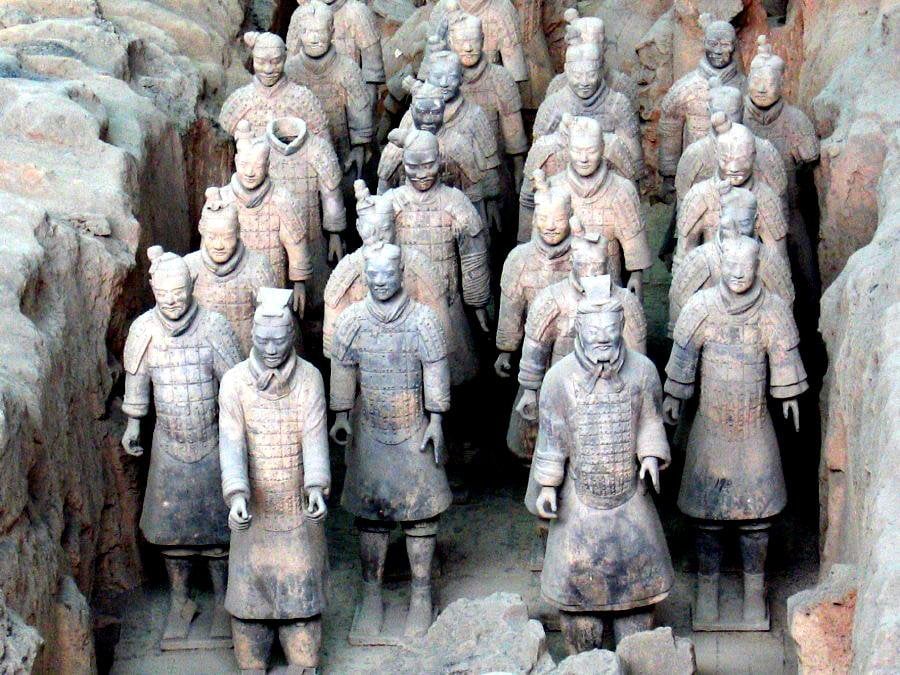
Week 4 of class focused on tombs from early China (if you couldn’t already tell from the title lol). The Chinese believe in the afterlife and these tombs were a way of providing resources to spirits in the afterlife. For example, there were clay horses made to put in the tombs with those that have passed, as well as fresh cooked food put in the tombs, so the spirits of the afterlife would be able to use these horses and eat the food made. The first reading for class Tuesday spoke about the Terracotta warriors, which are terracotta sculptures that depicted the armies of the first emperor of China, Qin Shi Huang. This army was buried with the emperor in order to protect him in the afterlife. The terracotta were placed in the tomb according to their rank and duty within the army, and included soldiers, archers, horses, and chariots. When the Terracotta Army was found, it provided a lot of insight into the Chinese Qin Dynasty, including their weapons, armor, and artifacts. I have heard of the terracotta army, but I did not know much more than that they were a part of a Chinese dynasty. I did look into some interesting facts about the Terracotta Army on this website, https://www.liverpoolmuseums.org.uk/stories/top-10-facts-about-terracotta-warriors, and found it funny that their clay sculptures were found by accident in 1974 by farmer Yang Zhifa. He was digging a well and found fragments of pottery, which led to the discovery of the army. There was also no historical evidence of the Terracotta Warriors ever existing, so to find all of these artifacts and clay sculptures of them, which not to mention none of the clay sculptures are exactly alike, changed the knowledge of their history.
Additionally for Tuesday, I chose the Option B Exploration Pack, which talked more about the tombs of China, especially the different materials or people buried in the same tomb. For example, if an important ruler or someone of high power had passed and was buried, there would be clay horses, chariots, materials, etc. buried with that ruler. However, any slaves or servants that the ruler had would be buried with them, living or dead. It was also interesting to read about how depending on the time, location and quantity of materials found within the tomb, historians could figure out what class the person buried was from. For example, a member of the imperial family used pottery, while members of the lower class would use wood.
In class on Thursday, we learned how to use Zotero, an efficient citation tool, and we also looked into proper resources found in the library, including books. One book that I found wrote about the different types of paintings of Chinese history, including different materials used, the way in which people would make the paintings and more. I am thinking for my final project to focus on something with Chinese art because I love to paint and draw. I am also a Chemistry major, so if I could possibly look at different materials used by Chinese dynasties or different chemicals pertaining to the Chinese dynasties, it would be really interesting and fun to research.
Ledderose, Lothar. Ten Thousand Things : Module and Mass Production in Chinese Art. The A.W. Mellon Lectures in the Fine Arts, 1998. Princeton, NJ: Princeton University Press, 2000.
Selbitschka, Armin. “Miniature Tomb Figurines and Models in Pre-Imperial and Early Imperial China: Origins, Development and Significance.” World Archaeology 47, no. 1 (2015): 20-44